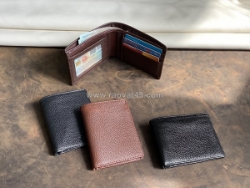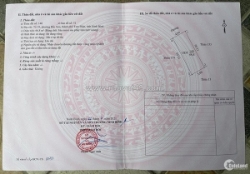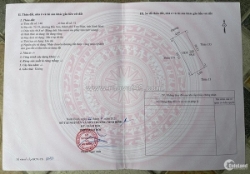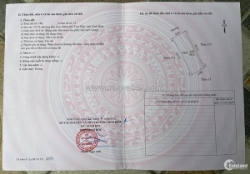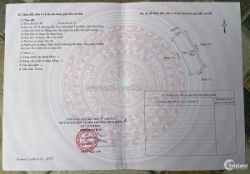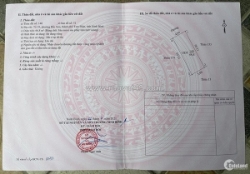Mastering the art of jewelry engraving with pneumatic tools
Ngày đăng: 11/24/2025 4:36:29 PM - Khác - Toàn Quốc - 7Chi tiết [Mã tin: 6336930] - Cập nhật: 30 phút trước
Jewelry engraving has long been a defining skill in the world of fine metalwork, turning simple surfaces into miniature canvases filled with character and personality. While hand gravers remain iconic tools in traditional workshops, modern pneumatic engraving systems have transformed the process—making it faster, smoother, and more accessible to both beginners and seasoned artisans. If you’re ready to elevate your engraving craft, understanding how pneumatic tools work and how to use them effectively is the key to mastering this captivating art.
Pneumatic jewelry engravers rely on compressed air to drive a small internal piston, delivering rapid, controlled impacts to the graver. This allows the artist to cut clean, consistent lines with minimal hand fatigue. Unlike manual gravers that require significant physical pressure, pneumatic systems let you focus on precision and artistic flow. The result is smoother curves, deeper cuts, and greater control over detail work, especially on harder metals like stainless steel, titanium, and platinum.
One of the biggest advantages of pneumatic engraving tools is their stability. Because the tool delivers even power, you can achieve uniform line thickness and consistent stroke depth—qualities that are essential for professional-style scrollwork, lettering, and decorative patterns. Whether you’re engraving rings, pendants, watch backs, or firearm components, the enhanced stability makes the entire process feel more natural.
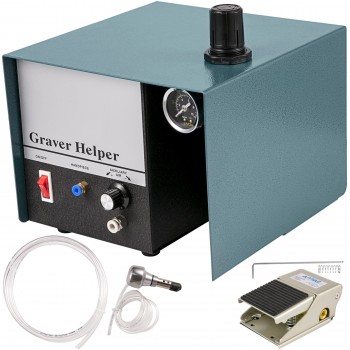
To get the best results, proper setup is essential. A steady air supply, ideally through a small compressor with adjustable pressure, ensures the tool performs smoothly. Most beginners find that starting at lower air pressure allows better control, gradually increasing power as confidence builds. Pairing the pneumatic handpiece with a high-quality magnification system—such as a jeweler’s microscope or a head-mounted loupe—further improves accuracy.
Your choice of gravers also plays a significant role. Sharp, well-shaped tips cut cleanly and reduce metal drag. Practicing sharpening techniques is just as important as learning to guide the tool itself. Many artists keep multiple gravers on hand—flat, round, square, and onglette—to handle different line styles and textures.
Good engraving technique comes from slow, steady practice. Start with simple patterns to build muscle memory. Focus on maintaining a consistent cutting angle and letting the pneumatic tool do the majority of the work. As your confidence grows, you can experiment with complex scrolls, shading techniques, and custom monograms that give each piece a distinctive personality.
Finally, don’t overlook safety. Proper finger rests, good lighting, and a comfortable bench setup help ensure control and prevent accidents.
With the power and precision of pneumatic tools, mastering jewelry engraving becomes not just achievable but deeply enjoyable. Whether you're personalizing custom pieces or adding ornate details to fine metalwork, these tools open the door to a new level of craftsmanship—one where creativity and technique come together seamlessly.
Tin liên quan cùng chuyên mục Khác
- 2
Ngộp bank bán gấp mặt tiền kinh doanh linh xuân thủ đức, 105m2 chỉ 12.x tỷ, 5tầng, kd siêu đỉnh
Cập nhật: vài giây trước - 2
Mặt tiền kinh doanh, trường thọ, thủ đức 190m2, chỉ 11.x tỷ cạnh trường học, giá đầu tư
Cập nhật: vài giây trước  2
2Cho thuê nhà mặt tiền đường 30/4 hải châu đà nẵng 3 tầng diện tích 160m2
Cập nhật: 3 phút trước- 0
Penaril male enhancement reviews price benifite ingrient where to buy?
Cập nhật: 4 phút trước - 2
Giá sốc đất thổ cư mặt tiền kinh doanh linh xuân, 100m2_5x20m chỉ 4.1 tỷ, rẻ kịch sàn
Cập nhật: 4 phút trước - 2
Giảm sốc 1.6 tỷ bán nhà đường số 5, linh xuân thủ đức 130m2, chỉ 5 tỷ nhỉnh, hxh lời ngay khi mua
Cập nhật: 4 phút trước  2
2Erec pro: der natürliche weg zu kraft und mentaler klarheit
Cập nhật: 5 phút trước 2
2Nguồn hàng có sẵn, lãi cao bán chạy dịp tết
Cập nhật: 5 phút trước- 2
Bán nhà gần quốc lộ 1k linh xuân, thủ đức 65m2, 2 tầng, ngang 10m chỉ 3.xtỷ, ngộp bank bán lỗ
Cập nhật: 6 phút trước - 2
Bán nhà kha vạn cân, linh tây, thủ đức 220m2, chỉ 7.x tỷ_ nhỉnh 30tr.m2_ cần tiền bán gấp
Cập nhật: 6 phút trước - 0
Xây dựng nhóm zalo ngân hàng 7 ngày full 1000 thành viên
Cập nhật: 6 phút trước - 2
Bán gấp nhà gần làng đại học, thủ đức, 80m2, chỉ 3.x tỷ siêu ngon
Cập nhật: 7 phút trước - 2
Bán nhà gần đường số 11, linh xuân, thủ đức 60m2_5x12m chỉ 2.9 tỷ, mới vào ở ngay
Cập nhật: 8 phút trước - 2
Giảm sốc 500tr bán ngay nhà linh xuân thủ đức 60m2, hxh, 3t, mới chỉ 3 tỷ nhỉnh
Cập nhật: 8 phút trước  2
2Bán nhà tam điệp sống chuẩn phong cách xanh hiện đại
Cập nhật: 9 phút trước- 2
Bán nhà gần cầu vượt gò dưa, bình chiểu 90m2_5.5x17, 12 phòng chỉ hơn 3 tỷ, ngộp bán gấp
Cập nhật: 9 phút trước - 2
Bán nhà gần chợ tam bình, tam phú, thủ đức 60m2, hẻm xe tải chỉ 3.xx tỷ rẻ kịch sàn
Cập nhật: 12 phút trước - 2
Ngộp bank bán gấp nhà gần ngã tư thủ đức, hiệp phú, 65m2, chỉ 3tỷ nhỉnh shr 1 căn ra mặt tiền
Cập nhật: 14 phút trước - 2
Bán nhà gần chợ tam bình, tam phú, thủ đức 60m2, hẻm xe tải chỉ 3.xx tỷ rẻ kịch sàn
Cập nhật: 14 phút trước  2
2Chính chủ bán nhà tam điệp, nhà đẹp cho người thích sự tinh tế
Cập nhật: 15 phút trước 2
2Chính chủ bán nhà tam điệp – gọn – đẹp – hiện đại
Cập nhật: 17 phút trước 2
2Bán gấp nhà đẹp – tân hạnh – 86,5m² – nhỉnh 3tỷ
Cập nhật: 18 phút trước- 2
Bán nhà đường số 11 linh xuân thủ đức, 102m_5x20, 2t, shr a4 chỉ hơn 3 tỷ, hạ chào liên tục.
Cập nhật: 19 phút trước  1
1Cardiogenix uk : reviews 2025″ side effects, best results, works & buy!
Cập nhật: 20 phút trước- 2
Bán nhà gần chợ thủ đức, linh đông thủ đức, 80m2, 1 căn ra mặt tiền chỉ 4.1 tỷ vào ở ngay
Cập nhật: 21 phút trước  2
2Nhà 2 tầng mới sát mt đường đặng chất p.chánh hưng. giá 5,5 tỷ tl
Cập nhật: 22 phút trước- 2
Ngộp bán gấp nhà gần đặng văn bi trường thọ, thủ đức 89m2_6.5x14m, chỉ 3.45 tỷ tặng nhà 2 tầng vào
Cập nhật: 25 phút trước  2
2Chính chủ bán nhà tam điệp chạm chuẩn sống mới
Cập nhật: 25 phút trước- 1
Tuyển sinh khóa học bồi dưỡng lãnh đạo, quản lý cấp phòng
Cập nhật: 26 phút trước  2
2Gluvafit österreich - so erhalten sie den vollen rabatt im angebot 2025!
Cập nhật: 27 phút trước- 2
Bán gấp nhà đường số 3, thủ đức 60m2, hẻm xe tải, 4t btct, 5pn chỉ 6.x tỷ, cơ hội hiếm
Cập nhật: 27 phút trước  2
2Chính chủ bán nhà tam điệp món quà bình yên dành cho chính bạn.
Cập nhật: 27 phút trước- 0
Giàn phơi thông minh 3
Cập nhật: 28 phút trước - 2
Ngộp nặng bán gấp đất thổ cư, gần hồ văn tư, trường thọ 45m2_ngang 6.5m chỉ 2.1 tỷ giá rẻ
Cập nhật: 28 phút trước - 2
Bán nhà gần làng đại học thủ đức 130m chỉ nhỉnh 3 tỷ xíu, hẻm xe hơi gía siêu rẻ
Cập nhật: 28 phút trước - 2
Bán nhà gần ngã tư thủ đức trường thọ 45m2, 2tầng hẻm xe tải chỉ nhinh 3 tỷ hiếm có
Cập nhật: 29 phút trước - 0
Lựa chọn đơn vị thi công uy tín xây dựng hội chợ triển lãm chất lượng
Cập nhật: 29 phút trước  2
2Ketospark™ gummies 800mg: ingredients, #1 safe price for sale in au
Cập nhật: 31 phút trước- 2
Bán nhà đường số 11, linh xuân, thủ đức, hẻm xe hơi, gần 60m2 chỉ nhỉnh 3 tỷ, quá ưng cái bụng
Cập nhật: 31 phút trước - 2
Ngộp bank mặt tiền kinh doanh, lê văn việt thủ đức gần 60m2, hxh chỉ 4.1 tỷ quá rẻ
Cập nhật: 33 phút trước - 2
Siêu hot bán gấp mặt tiền kinh doanh kha vạn cân, linh đông, 1230m2, chỉ 8x tỷ, đường 16m, sầm uất
Cập nhật: 33 phút trước  2
2Nhà hẻm 137 âu dương lân p.chánh hưng (p2q8)
Cập nhật: 34 phút trước 2
2Para 911 canada: uses ingredients, pros-cons, cost {order now}
Cập nhật: 35 phút trước- 2
Bán gấp mặt tiền kinh doanh phạm văn đồng, linh đông, 90m2, 3t, ngang bề thế 5m chỉ 7 tỷ nhỉnh,
Cập nhật: 35 phút trước - 2
Ngộp bank bán nhà gần đặng văn bi trường thọ,thủ đức 90m2, ngang 5m, hxh chỉ4.xtỷ_ giảm sốc 1.3 tỷ
Cập nhật: 36 phút trước - 2
Bán nhà gần vincom, bình thọ, thủ đức, 99m2, hẻm xe hơi chỉ 8.x tỷ, rẻ bao khu vực
Cập nhật: 36 phút trước  1
1Cần 2 thơ phụ biết gôi đầu làm móng
Cập nhật: 36 phút trước- 1
Mở khóa học nghiệp vụ khai hải quan điện tử
Cập nhật: 37 phút trước - 1
Khai giảng khóa học kế toán tổng hợp thực hành
Cập nhật: 37 phút trước - 1
Mở khóa học bồi dưỡng kế toán viên
Cập nhật: 37 phút trước


